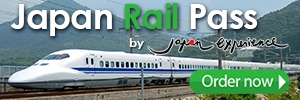If you make a Hakone trip on the way to Kyoto, you can have intercity JR rides in your current itinerary for less than 23000 yen.
In your latter calculation, Tobu Railway fares for a Kawagoe trip (940 yen) and the price of a Hakone Freepass (5140 yen) are counted while they are not covered by a Japan Rail Pass, and a Kyoto Sightseeing Two-day Pass Card (2000 yen, valid on many bus lines) and a Kyoto one-day bus pass (500 yen) are needlessly expected together.
[Shinkansen]
Personally I dare not recommend Puratto Kodama to a traveler hoping to "save time" and thinking of a "Nozomi train" to Kyoto, because "Kodama" is the slowest train service on Tokaido Shinkansen with trains making stops at all stations.
Shinkansen "Nozomi" trains skip Odawara Station.
At Odawara, westbound Shinkansen "Hikari" trains are available every two hours from 08:08 to 18:08, all of which are bound for Shin-Osaka and scheduled to make a brief stop at Kyoto.
(A Shinkansen stop at Kyoto Station is really a brief stop, so please get prepared to get off early.)
[Places to visit]
Which places in Tokyo, in Kyoto City and in Nara City do you have in mind?
Will you visit the warehouse district in Kawagoe City? If so, Kawagoe-shi Station of Tobu is a little closer than Kawagoe Stations of Tobu and JR.
When in a day will you leave Kyoto for Kinosaki?
[Transportation cards and passes]
If you make a Hakone trip on the way to Kyoto, and if you travel beyond Kyoto Station mainly with a JR-West Kansai WIDE Area Pass, you can have intercity JR rides in your current itinerary for 22720 yen; so, unless you add a trip, a nationwide Japan Rail Pass does not seem to be a good choice. (You can save a Shinkansen charge for Tokyo / Shinagawa -- Odawara (2250 yen) by using non-Shinkansen JR lines instead of Tokaido Shinkansen.)
If you are interested in traditional Japanese housing, you might hope to add a trip to Shirakawa-go. In that case, a 7-day Japan Rail Pass may pay off, but Shirakawa-go is served not by rail but by non-JR highway bus, so you should pay fares for at least two bus rides.
- japan-guide.com: Shirakawa-go and Gokayama
http://www.japan-guide.com/e/e5950.htmlIn Kyoto, you will not need both a Kyoto Sightseeing Two-day Pass Card (2000 yen) and a one-day bus pass (500 yen); the former can be used on all Kyoto City Bus lines and most Kyoto Bus lines.
Since 22 March 2014, a one-day bus pass for the flat-fare zone on both Kyoto City Bus and Kyoto Bus lines has been available for 500 yen per adult. This one-day bus pass can cover rides to/from many major tourist spots in Kyoto City. (A Kyoto City Bus All-day Pass (500 yen) was not valid on Kyoto Bus lines.)
A JR-West Kansai WIDE Area Pass does not cover a Ltd. Express charge when you have a reserved seat. I suppose it will not make a big problem because you will not travel during a very busy season and Ltd. Express trains on Kyoto -- Kinosakionsen and on Kyoto -- Kansai-airport have non-reserved seats.
Your cost on intercity JR rides in your current itinerary is like the following if you use Shinkansen to Odawara and make a Hakone trip on the way to Kyoto.
# 8210 yen as a JR basic fare
for Tokyo -- Odawara -- Kyoto.
: This JR basic-fare ticket can be valid for 4 consecutive days.
# 2250 yen as a JR Shinkansen charge
(with a seat reserved in a "Hikari" / "Kodama" train)
for Tokyo -- Odawara.
# 5060 yen as a JR Shinkansen charge
(with a seat reserved in a "Hikari" / "Kodama" train)
for Odawara -- Kyoto.
# 7200 yen on a JR-West Kansai WIDE Area Pass.
# 22720 yen in total.
[Accommodation]
I recommend checking in advance which exit of which station on which line should be good for your hotel.
For example, if you plan to stay in Ikebukuro area, for some hotels Higashi-ikebukuro Station on subway Yurakucho line is better than Ikebukuro Stations of JR, subway, Tobu and Seibu.
Will you stay overnight in Kinosaki?

